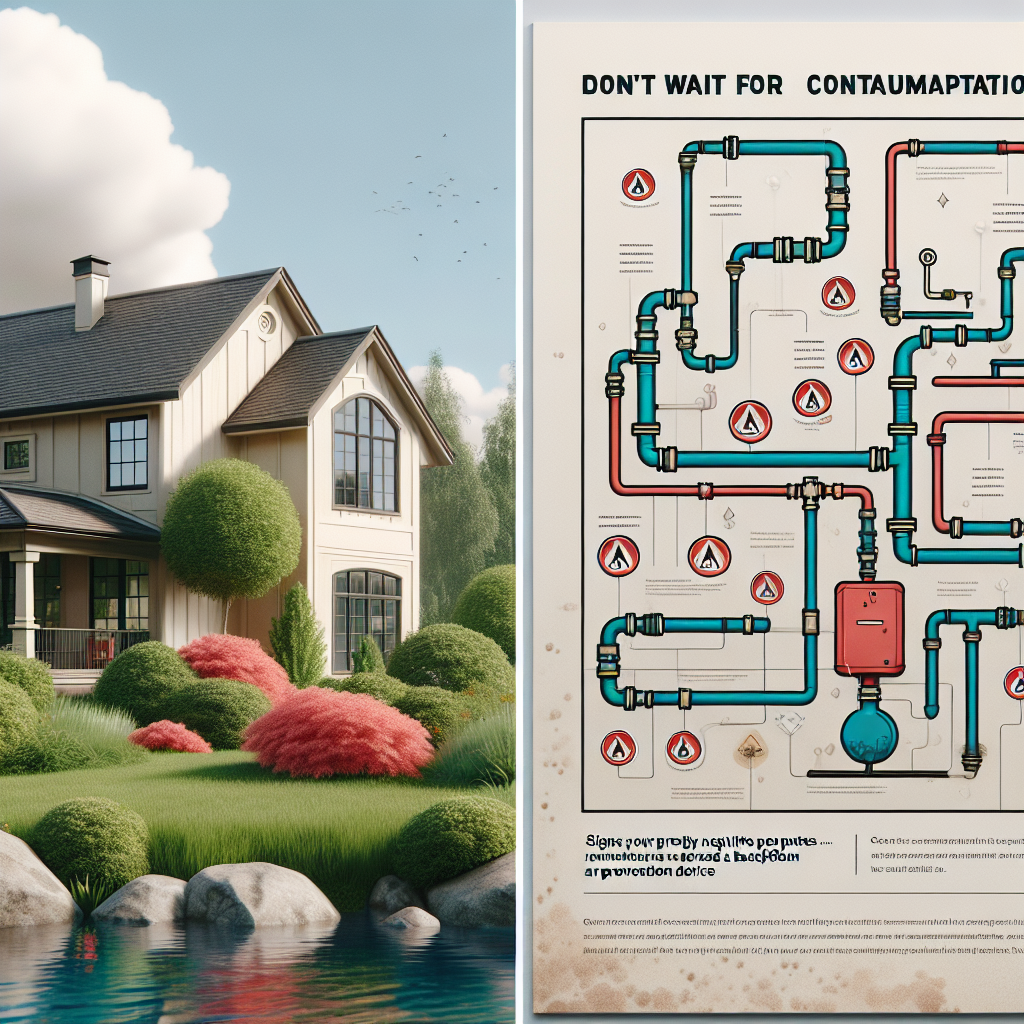When it comes to maintaining safe drinking water in our homes and businesses, prevention is key. One of the most crucial components of a building’s plumbing system is the backflow prevention device. Ignoring the signs that you need this safety feature can lead to contamination that poses significant health risks. In this article, we will explore the importance of backflow prevention devices, how to identify signs that your property requires one, and the steps you can take to protect your water supply.
What is Backflow and Why Does It Matter?
Backflow occurs when the water flow in your plumbing system is reversed, allowing potentially contaminated water from outside sources to enter your clean water supply. This can happen for various reasons, including changes in water pressure, pipe blockages, or faulty plumbing systems. Contaminated water can lead to serious health risks, so understanding the necessity for a backflow prevention device is crucial.
Signs You Might Need a Backflow Prevention Device
Recognizing the need for a backflow prevention device is essential for safeguarding your property’s water supply. Here are several signs that indicate it might be time to invest in this protective measure:
1. Frequent Water Pressure Drops
Have you noticed a sudden drop in your water pressure? This could mean there’s a change in the system that might lead to backflow. Investigating the cause of these pressure drops is critical, as they can allow contaminated water to flow into your home.
2. Irrigation Systems and Lawn Care Equipment
If your property has an irrigation system, it’s absolutely vital to have a backflow prevention device in place. Lawn care products, fertilizers, and pesticides can contaminate your water supply if not properly regulated. Installing the device ensures that no harmful substances seep into your drinking water.
3. Old or Unmaintained Plumbing Systems
Older plumbing systems are more susceptible to issues that can cause backflow. If your property has outdated piping or hasn’t been inspected in years, it’s essential to evaluate your plumbing and consider a backflow prevention device for added security.
4. Signs of Wear and Tear
Inspect your plumbing for any visible signs of wear and tear, such as leaks, corrosion, or unusual odors. These can indicate a higher risk of backflow incidents. Be proactive by scheduling regular plumbing inspections to catch these issues before they escalate.
5. Recent Flooding or Sewage Issues
If your property has recently experienced flooding or sewage problems, it’s crucial to have a backflow prevention device installed. This equipment acts as a barrier against contaminants that may come from local sewer systems during heavy rains or flooding events.
Benefits of Installing a Backflow Prevention Device
The peace of mind that comes from knowing your water supply is protected is just one of the many benefits of installing a backflow prevention device. Here are some additional advantages:
1. Health Protection
Installing a backflow prevention device safeguards your family, employees, and customers from the dangers of contaminated water. Protecting your drinking water is paramount to maintaining a healthy environment.
2. Compliance with Local Regulations
Many municipalities require properties, especially commercial ones, to have backflow prevention devices installed. Not having one could lead to fines or legal issues, so it’s essential to comply with local laws.
3. Increased Property Value
A property that has been equipped with proper backflow prevention devices can have higher marketability. Future buyers are likely to appreciate the investment in prevention and safety measures.
4. Reduced Maintenance Costs
While there is an upfront cost to installing backflow prevention devices, they can save money in the long run by preventing costly water quality problems and maintaining the integrity of your plumbing systems.
Steps to Take
If you identify any of the signs mentioned above, or if you simply want to be proactive about your water safety, here’s what to do:
1. Consult a Plumbing Professional
Engaging a licensed plumber who specializes in backflow prevention can provide you with valuable insights and options tailored to your property’s needs. They’ll conduct a thorough examination of your plumbing system and recommend solutions.
2. Install the Device
Once you’ve determined the best type of backflow prevention device for your property, have it installed by a professional. Proper installation is critical to ensure the system functions effectively.
3. Schedule Regular Maintenance
Backflow prevention devices require regular inspections and maintenance to ensure they are working as intended. Schedule routine check-ups with your plumber to sustain optimal functionality.
4. Educate Others
If you run a business or manage properties, it’s crucial to educate staff or tenants about the importance of backflow prevention. Promote awareness and ensure everyone understands how to recognize issues that might arise.
Conclusion
Don’t wait for contamination to pose a risk to your drinking water supply. By being proactive and recognizing the signs that indicate the need for a backflow prevention device, you can protect your property, your health, and your loved ones. Reaching out to a plumbing professional for a comprehensive inspection can be the first step towards safeguarding your water supply. Don’t hesitate—invest in your peace of mind today!


